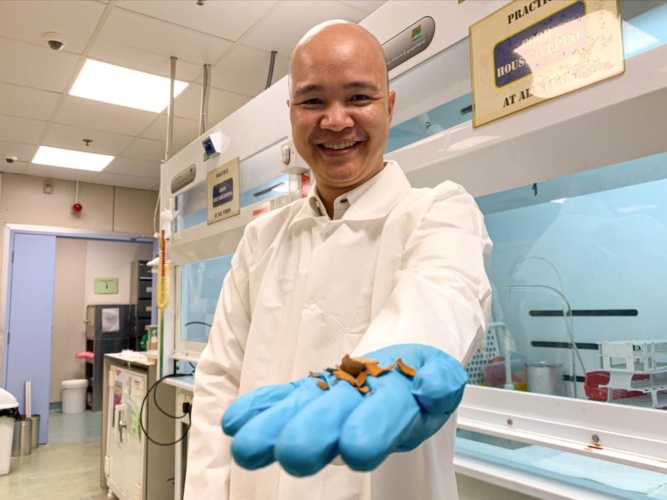
Bulky tamarind shells are discarded during food production and take up a considerable amount of space in landfills. Now, a team of international scientists led by Nanyang Technological University, Singapore (NTU Singapore) has found a way to convert the waste material into carbon nanosheets, which are a key component of supercapacitors.
The team, which includes researchers from the Western Norway University of Applied Sciences, and Alagappa University in India, believes that these nanosheets, when scaled up, could be an eco-friendly alternative to their industrially produced counterparts whilst simultaneously cutting waste. The team’s findings have been published in Chemosphere.
In a statement, study leader Dr Cuong Dang, from NTU’s School of Electrical and Electronic Engineering, said: “Through a series of analysis, we found that the performance of our tamarind shell-derived nanosheets was comparable to their industrially made counterparts in terms of porous structure and electrochemical properties. The process to make the nanosheets is also the standard method to produce active carbon nanosheets.”
Professor G. Ravi, head of the Department of Physics at Alagappa University, added: “The use of tamarind shells may reduce the amount of space required for landfills, especially in regions in Asia such as India, one of the world’s largest producers of tamarind, which is also grappling with waste disposal issues.”
NTU Singapore said that to manufacture the carbon nanosheets, the researchers first washed tamarind fruit shells and dried them at 100°C for around six hours, before grinding them into powder.
The scientists then baked the powder in a furnace for 150 minutes at 700-900°C in the absence of oxygen to convert them into nanosheets.
According to NTU Singapore, industrial hemp fibres are commonly used to produce carbon nanosheets, but these need to be heated at over 180°C for 24 hours before being further subjected to intense heat to convert them into carbon nanosheets.
Professor Dhayalan Velauthapillai, head of the research group for Advanced Nanomaterials for Clean Energy and Health Applications at Western Norway University of Applied Sciences, said: “Carbon nanosheets comprise of layers of carbon atoms arranged in interconnecting hexagons, like a honeycomb.
"The secret behind their energy storing capabilities lies in their porous structure leading to large surface area which help the material to store large amounts of electric charges.”
The tamarind shell-derived nanosheets are said to have shown good thermal stability and electric conductivity, making them promising options for energy storage.
The researchers hope to explore larger scale production of the carbon nanosheets with agricultural partners. They are also working on reducing the energy needed for the production process and are looking to improve the electrochemical properties of the nanosheets.










Comment: The UK is closer to deindustrialisation than reindustrialisation
"..have been years in the making" and are embedded in the actors - thus making it difficult for UK industry to move on and develop and apply...